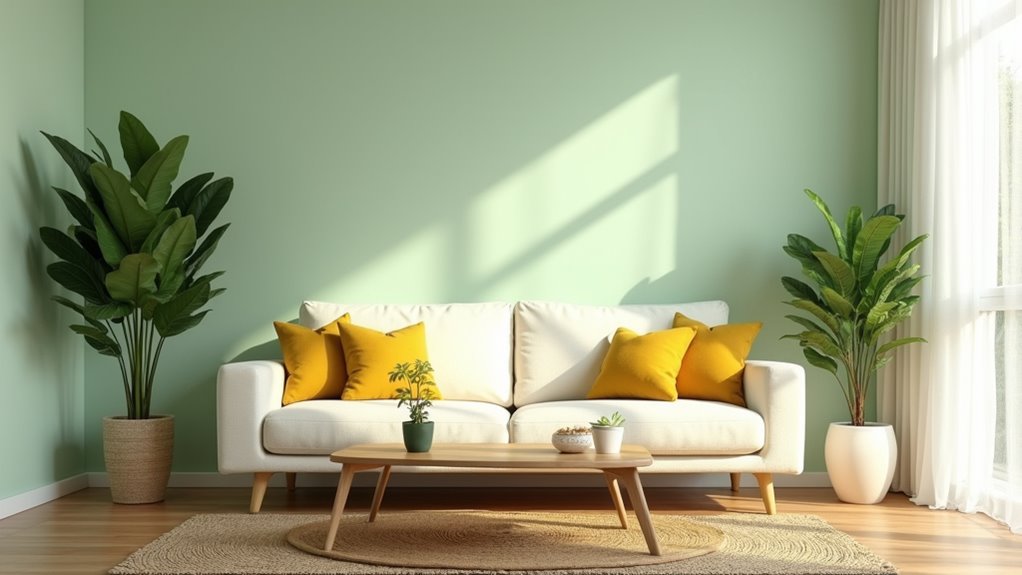Styling a living room with light green walls can transform a space into a serene haven. Pair neutral tones like crisp white or soft gray for balance. Add warmth with natural wood furniture or flooring. Introduce vibrant accents such as coral pillows or mustard ottomans for energy. Mix textures like velvet and rattan for depth. Optimize lighting with warm bulbs to enhance ambiance. Explore further to uncover additional design secrets for a stunning result.
Key Takeaways
- Pair light green walls with neutral tones like white or gray for a balanced, serene look.
- Add warmth using wood furniture or accents like oak frames for texture and depth.
- Introduce vibrant accents such as coral pillows or mustard ottomans for energy and contrast.
- Mix textures like velvet cushions and woven rugs to create a dynamic, inviting space.
- Optimize lighting with warm bulbs and dimmers to enhance the green’s earthy ambiance.
Pairing Neutral Tones for Balance
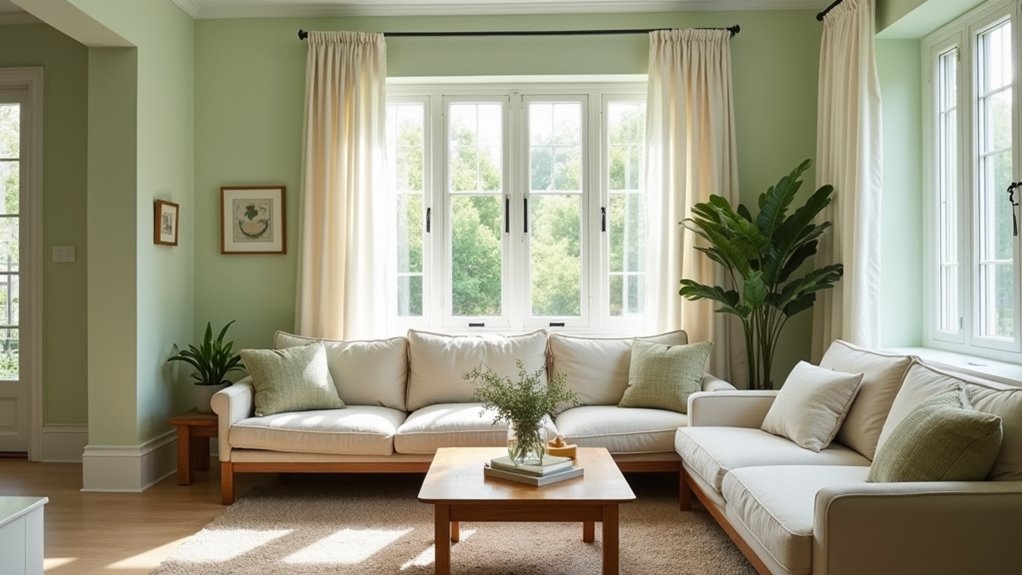
When styling a living room with light green walls, pairing neutral tones is essential for achieving a balanced and harmonious look. Clients can explore complementary color schemes by incorporating crisp white trim to make the green pop, or soft gray for a modern, sophisticated edge.
Styling light green walls? Pair with neutral tones like crisp white trim or soft gray for a balanced, modern, and sophisticated living room look.
A white sofa or plush gray seating against a light green backdrop offers striking contrast while maintaining serenity. For a trend-aware approach, consider color blocking techniques, such as painting one wall light green and keeping others white for an understated yet contemporary vibe.
Layering neutrals like ivory or beige adds depth, especially with textured elements like woven rugs or linen pillows. Distributing neutral accents evenly ensures cohesion, while cream-colored furniture provides a timeless touch. Additionally, using neutral tones helps to balance the vibrancy of green, creating a cohesive and calming atmosphere. Pale greens, known for desaturating warmer hues, can also soften warm tones like oranges or pinks if present in decor accents.
These strategies create an airy, inviting space tailored to client preferences, balancing vibrant green with calming tones for a polished, harmonious result.
Adding Warmth With Wood Elements
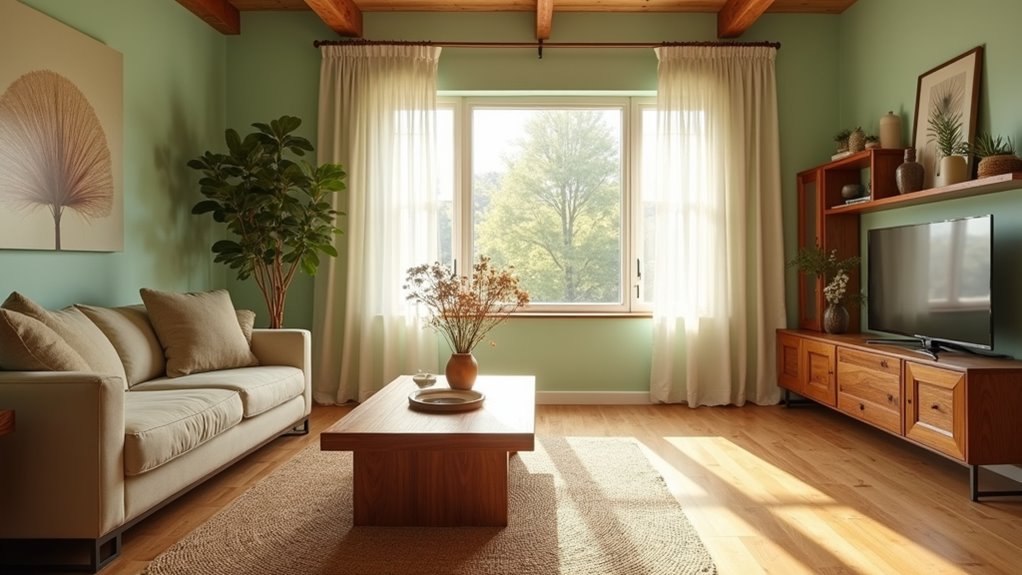
Incorporating wood elements into a living room with light green walls offers a seamless way to infuse warmth and natural charm, creating a welcoming space for clients. Wood furniture with visible grain adds texture, while lighter oak or darker walnut options cater to varied aesthetics, from airy to sophisticated. Natural wood floors, like maple with neutral undertones, enhance the organic feel, complementing the green backdrop effortlessly.
For clients seeking depth, mixing wood tones and textures is key. Combine modern finishes with rougher, reclaimed planks for rustic charm in wall treatments or decor. Wooden accents, such as frames or lamps, elevate ambiance. Below is a guide to wood choices:
| Wood Type | Best Use for Clients |
|---|---|
| Light Oak | Brightens smaller spaces |
| Walnut | Grounds room with cozy depth |
| Maple | Versatile for varied green shades |
| Reclaimed Wood | Adds rustic character to walls |
| Engineered Taupe | Sophisticated modern flooring option |
Enhancing With Vibrant Accent Shades
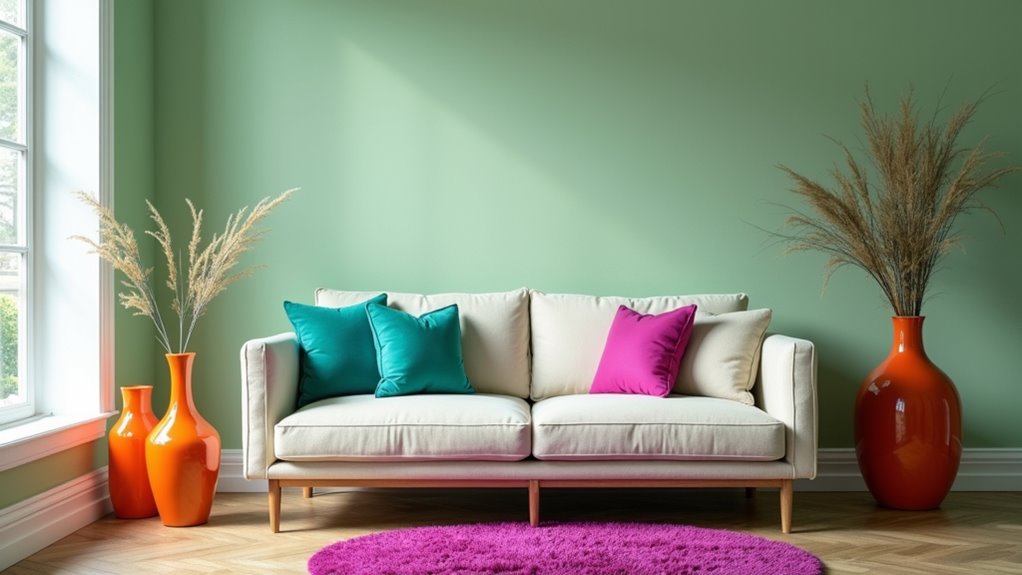
Designers often find that after establishing warmth with wood elements, introducing vibrant accent shades can elevate a living room with light green walls into a dynamic and personalized space for clients. By exploring bold color combinations, such as pairing light green with complementary coral or triadic purple and orange, a striking yet balanced aesthetic emerges.
Designers transform light green living rooms with vibrant accents like coral or triadic purple and orange, crafting a bold, balanced, and personalized aesthetic.
Clients can embrace trend-forward choices like vibrant fuchsia pillows or a mustard yellow ottoman to inject energy and joy.
Additionally, pattern mixing offers a sophisticated way to integrate these hues, combining geometric curtains with floral cushions in analogous blues or yellows for visual intrigue. To maintain harmony, designers recommend the 60-30-10 rule, ensuring light green dominates while vibrant accents play a supporting role.
Distributing these shades through artwork or small decor items, balanced by neutral buffers like cream rugs, creates a cohesive, client-focused design that feels both fresh and inviting.
Mixing Textures for Depth
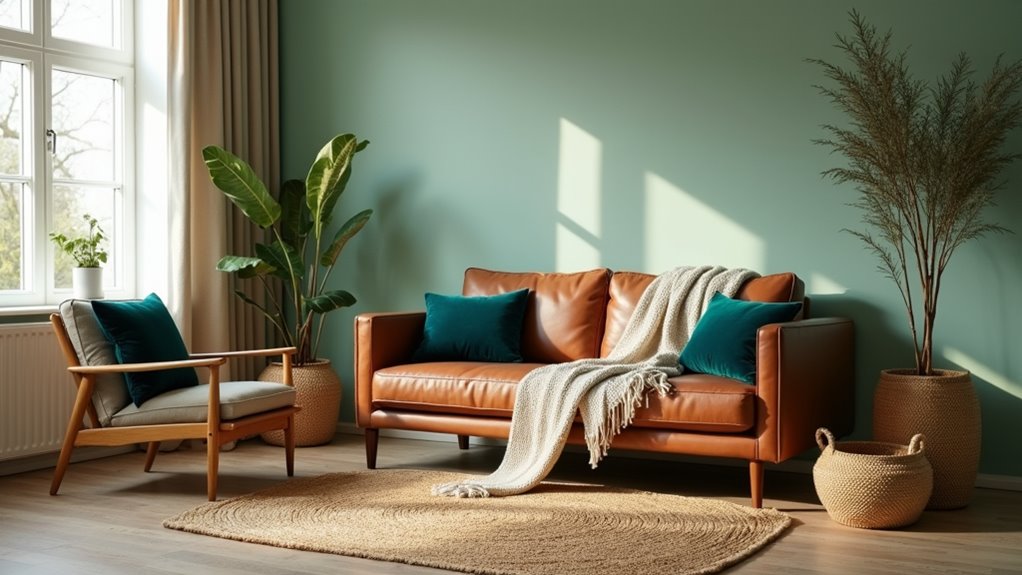
As the foundation of a living room with light green walls takes shape, introducing a variety of textures becomes essential to create depth and visual interest for a client’s space. By focusing on textural contrast, designers can pair smooth elements like polished marble tabletops with rough woven jute rugs or rustic wooden accents, crafting a balanced yet dynamic aesthetic.
Tactile layering further elevates the design, encouraging clients to mix soft velvet cushions with chunky wool throws and airy linen curtains, adding warmth and dimension. Incorporating natural materials such as rattan baskets, terracotta decor, or leafy plants enhances the earthy vibe of light green walls.
For a modern twist, subtle metallic touches in brass or gold can contrast with organic textures, ensuring sophistication. This thoughtful blend of textures not only captivates the eye but also creates a welcoming, trend-forward environment tailored to a client’s unique style.
Optimizing Lighting for Ambiance
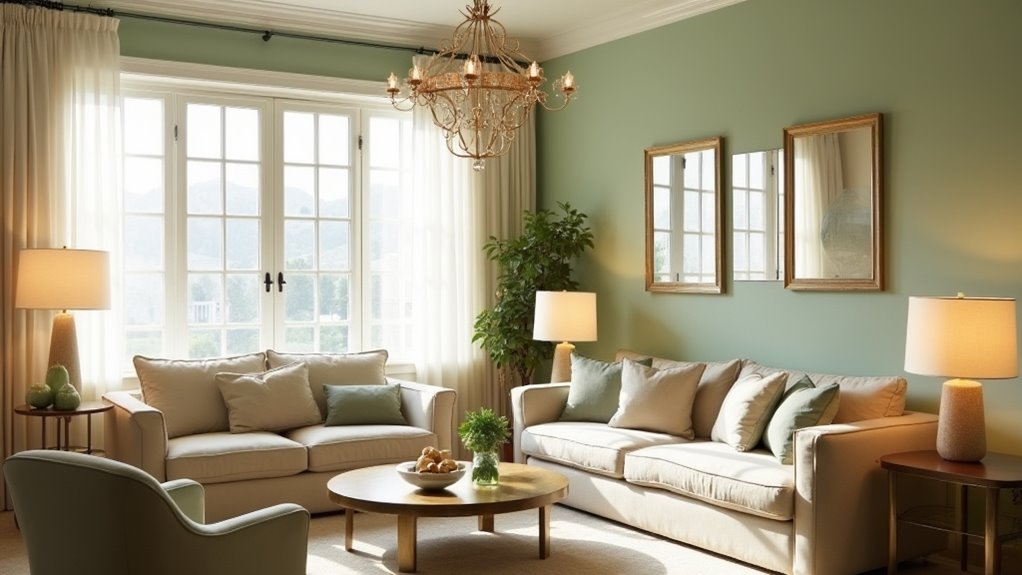
While crafting a living room with light green walls, optimizing lighting becomes a critical element in shaping the desired ambiance for a client’s space. Light placement is essential to highlight the airy, reflective quality of shades like mint or sage, ensuring natural light from south-facing windows in the northern hemisphere is maximized for warmth and brightness.
Strategic shade selection, such as light, flowing curtains, helps regulate glare while softening sunlight for a balanced glow.
For artificial lighting, layering ambient fixtures like pendant lights with task and accent options ensures versatility. Warm-toned bulbs around 3000K enhance the earthy or spring-like hues of green walls, creating a cozy atmosphere. Dimmer switches offer control over brightness, while thoughtful light placement near artwork or plants adds depth.
